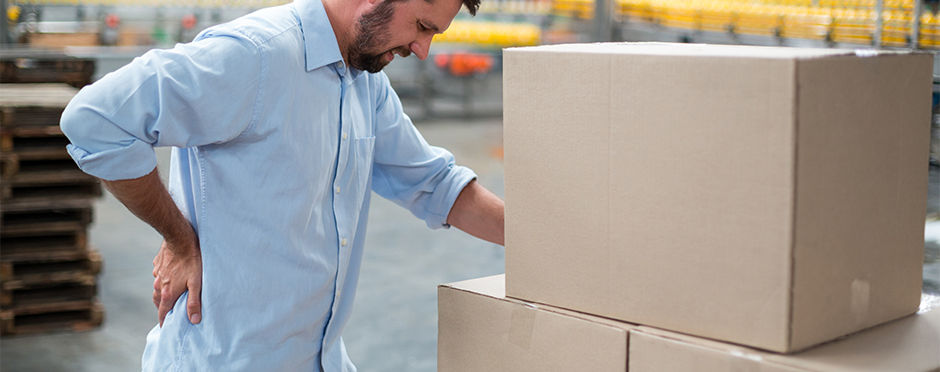
You Can’t Actually “Slip” a Disc
Leave a CommentWe’ve all heard it, someone we know has “slipped a disc” in their back. However, slipping a disc is actually not possible. The vertebral discs between each vertebrae cannot slip out. So what is actually happening when someone “slips” a disc?
The Spine
The spine is made of 33 bones called vertebrae with a vertebral disc between each. There are 23 vertebral discs in the human spine. Each intervertebral disc is made of a stiffer outer ring surrounding the inner, gel-like center. The role of the intervertebral discs is for shock absorption in the spine.
Disc Herniation
What is commonly called a slipped disc is actually a disc herniation, which means part of the inner gel-like substance of the intervertebral disc is protruding. Disc herniations account for 2-3 percent of low back pain diagnoses. 1 Herniation occurs when there are unbalanced forces that deform the outer ring of the disc, which allows the gel-like inner substance to be forced laterally or posteriorly. Depending on how much and where the disc herniation occurs, muscle function can be altered and pressure can be placed on nearby nerves. If the nerve is affected, symptoms can include numbness, tingling, or pain locally or down the leg.
Causes of Disc Herniation
The disc is not physically slipped out, but rather the disc herniation is a bulge in one direction. Disc herniation can occur during physical performance, trauma, or as a result of chronic deterioration due to factors like poor posture. Disc herniation is more likely in older individuals, possibly because of abdominal muscle weakness that occurs during aging.2 Possible factors that may contribute to disc herniation include:
- Poor posture of the lumbar spine
- Sitting too long with poor posture (slouching)
- Poor lifting technique
- Abdominal muscle weakness
- Being overweight
Disc Herniation Treatment
Disc herniations can typically be resolved with conservative care, with data showing that 80 percent of patients found success within four to six weeks of conservative care.1 Physical therapy is an important part of conservative management of disc herniation, which may include exercises to target abdominal and back muscles. Surgery is indicated if pain control is unsuccessful, if great muscle weakness is found or certain neurological changes occur .1
Ways to Reduce Your Risk of Disc Herniation
- Use safe lifting techniques: bend at the knees and use your legs to help lift the weight rather than the back muscles
- Maintain a healthy weight
- Don’t sit for long periods; get up and stretch periodically
- Practice exercises to strengthen the muscles in the back, legs and abdomen to help decrease the risk of back injury.
If you suspect a disc herniation or other back injury, contact your nearest Athletico to schedule a free assessment.
The Athletico blog is an educational resource written by Athletico employees. Athletico bloggers are licensed professionals who abide by the code of ethics outlined by their respective professional associations. The content published in blog posts represents the opinion of the individual author based on their expertise and experience. The content provided in this blog is for informational purposes only, does not constitute medical advice and should not be relied on for making personal health decisions.
References:
1. Vialle LR, Vialle EN, Suárez henao JE, Giraldo G. LUMBAR DISC HERNIATION. Rev Bras Ortop. 2010;45(1):17-22.
2. Skaf GS, Ayoub CM, Domloj NT, Turbay MJ, El-zein C, Hourani MH. Effect of age and lordotic angle on the level of lumbar disc herniation. Adv Orthop. 2011;2011:950576.
